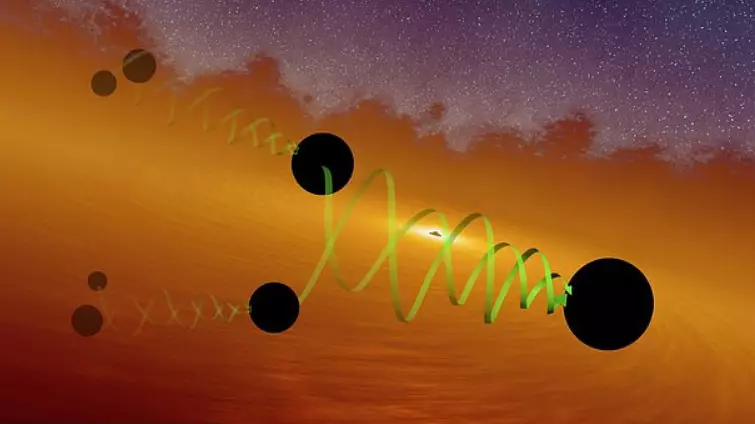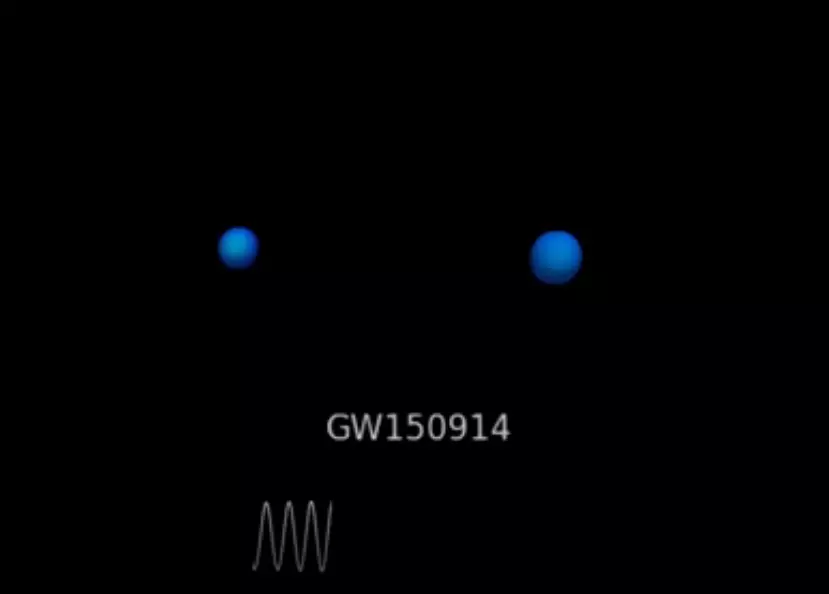
A 'massive gravitational wave source' from two black holes merging managed to produce a blast equivalent to the energy of eight suns, sending shockwaves through the universe, according to new research.
The new paper comes from teams at two twin gravitational wave detectors: the National Science Foundation's Laser Interferometry Gravitational-wave Observatory (LIGO) in America and the Virgo detector in Italy.
Advert
The detectors picked up on a signal that came from two black holes merging - the first of which was around 85 times greater than the mass of the Sun; the second around 66 times greater.
The signal, labelled GW190521, was detected on 21 May.
Researchers from Monash University involved in the study say the new black hole is twice as heavy as any previously observed using gravitational waves.
Study co-author Juan Calderón Bustillo writes: "This is the first time we've observed an intermediate-mass black hole, almost twice as heavy as any other black hole ever observed with gravitational-waves.
Advert
"For this reason, the detected signal is much shorter than those previously observed. In fact, it's so short that we can barely observe the black hole collision, we can only see its result."
Scientists from the University of Glasgow also assisted with the data analysis process, with Daniel Williams, from the Physics and Astronomy Department, saying: "Gravitational wave astronomy continues to help us answer questions about how our universe works, as well as present us with exciting new problems to solve.
"This detection gives us a fascinating first look at the physics of intermediate-mass black holes, and opens up the opportunity for future detections to solve the mystery of just how they are formed."

He said that, given the size of the black holes before they merged, they could have already been the products of previous mergers.
Advert
He added: "It's also possible that black holes of this size might have been formed by stripping gas from other nearby stars to add to their own mass before they collided with each other.
"We're very much looking forward to finding more pieces of this puzzle in future detections."
Professor Sheila Rowan, director of the University of Glasgow's Institute for Gravitational Research, said: "One of the lessons we've learned since the first Ligo observing run is the importance of being able to pause occasionally to upgrade the instruments and improve their sensitivity.
"It translates into more detections, an improved rate of detections, and also detections of individual events made at higher sensitivities. That enables detections like this one, where the very low frequency of the signal might well have been impossible to pick out of the background noise without our improvements.
Advert
"It's an exciting preview of the kinds of science we can look forward to as we continue to develop the new field of gravitational wave astronomy."
Featured Image Credit: LIGO/Caltech/MIT/R. Hurt (IPAC)Topics: World News, News, space